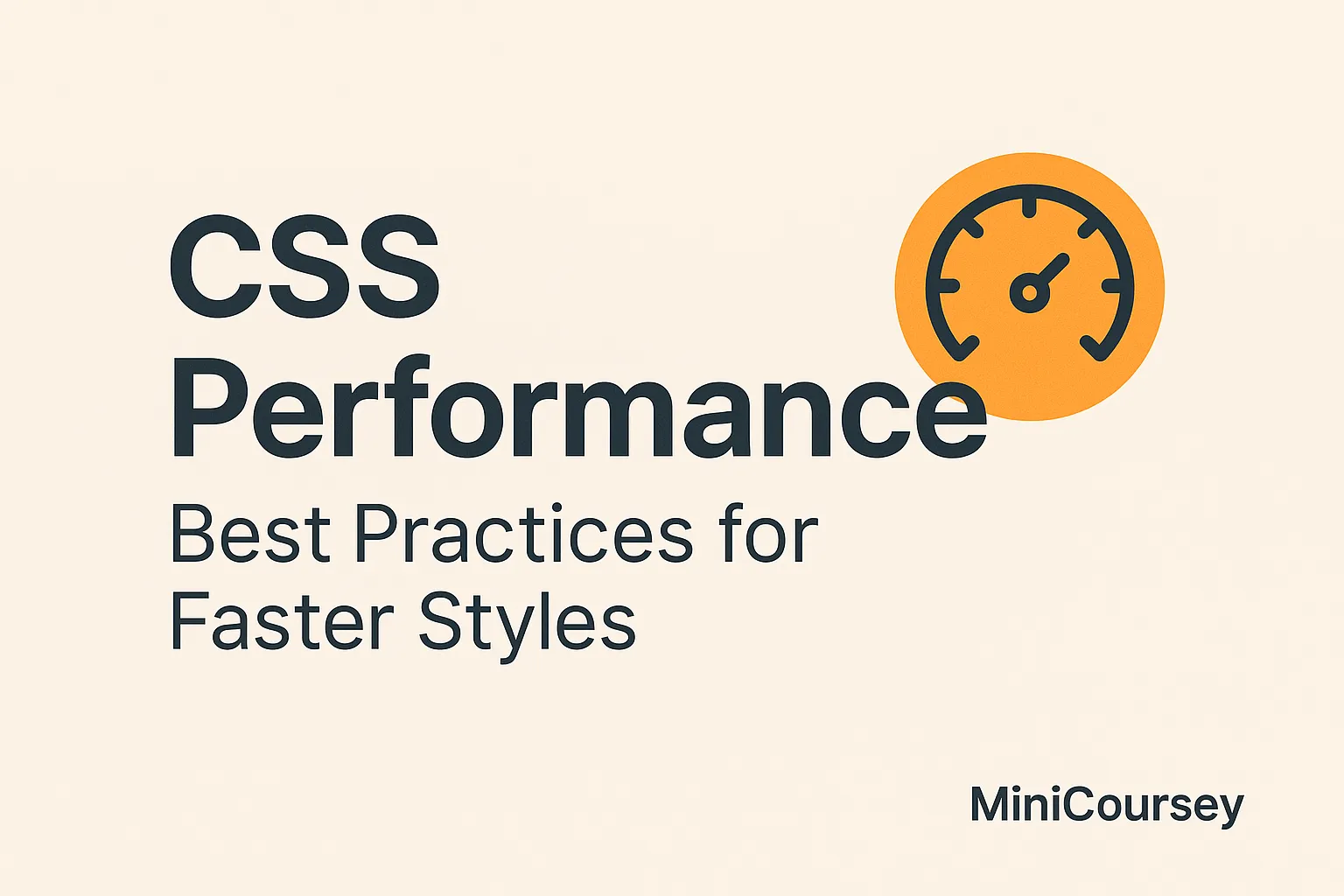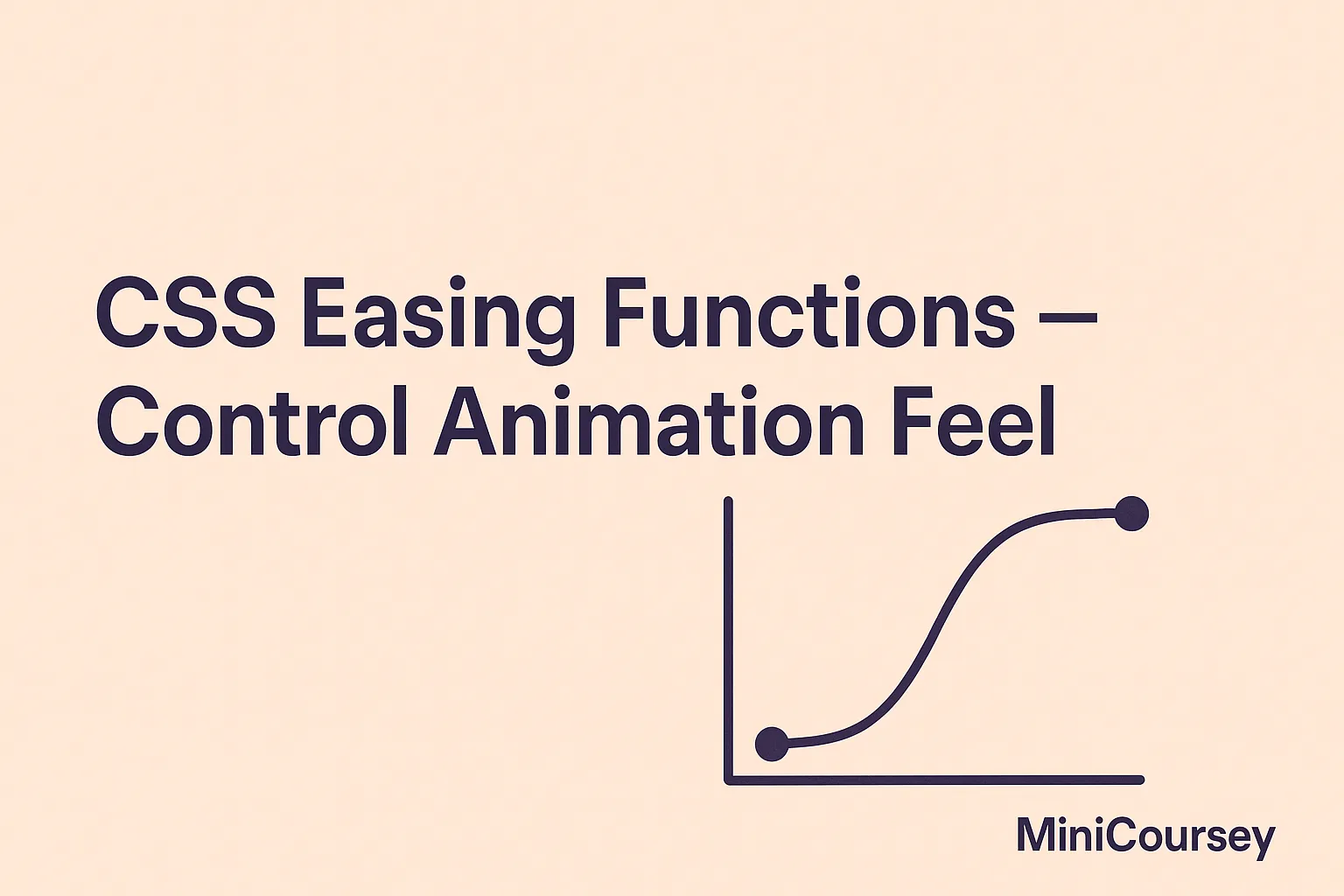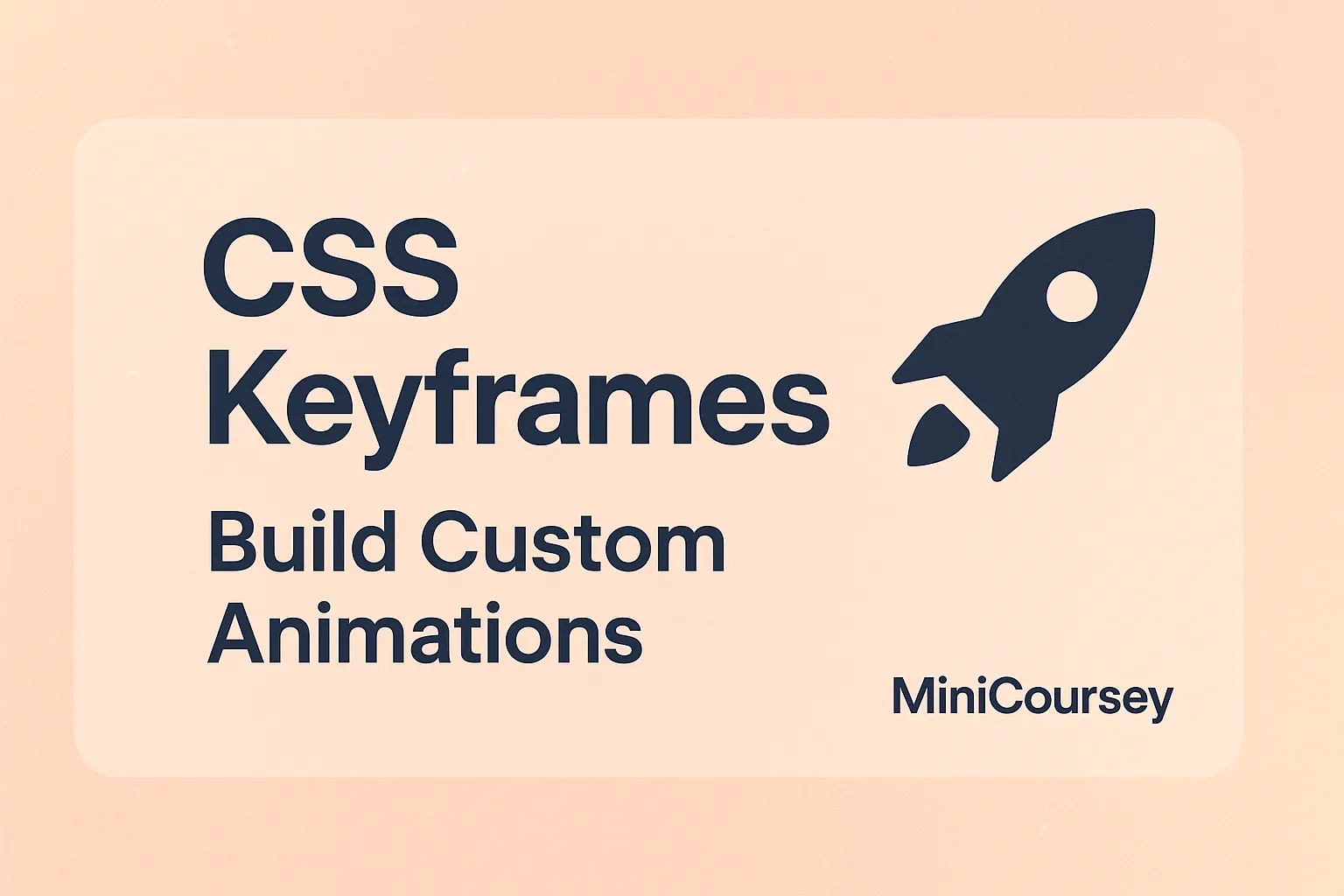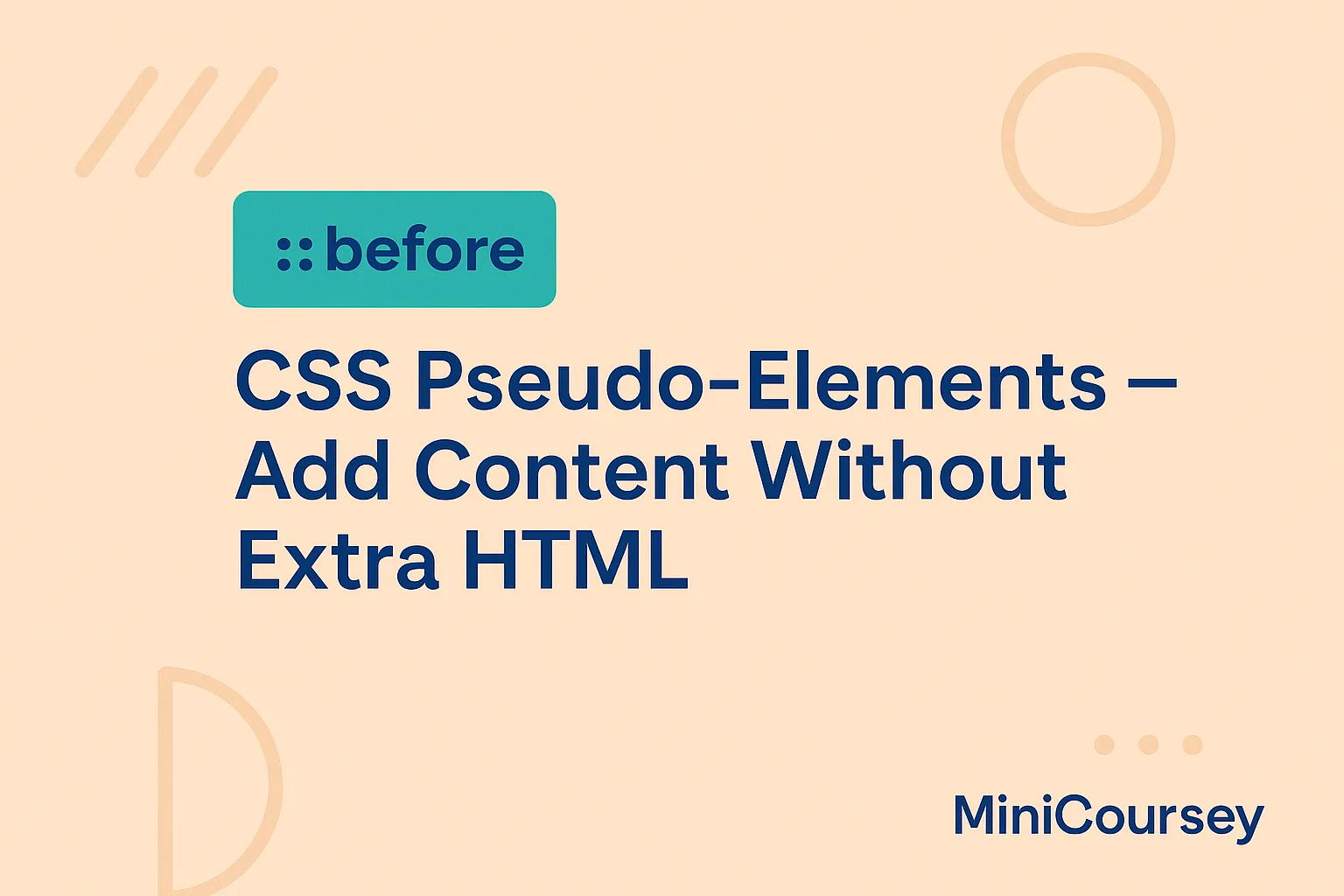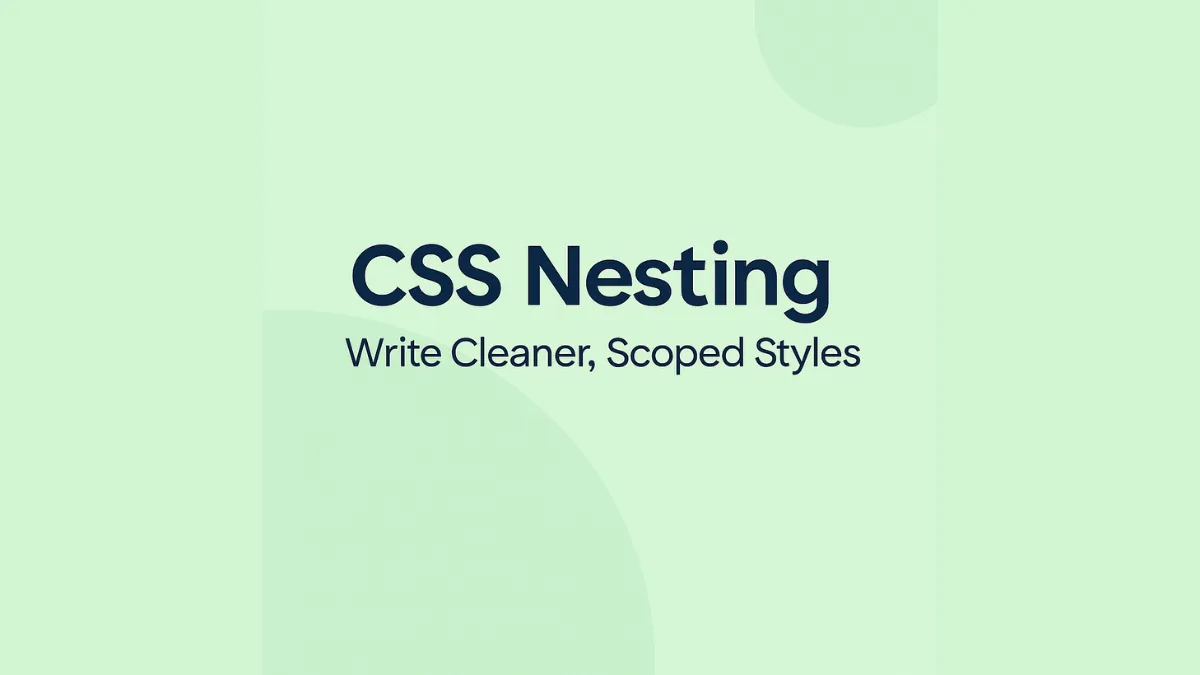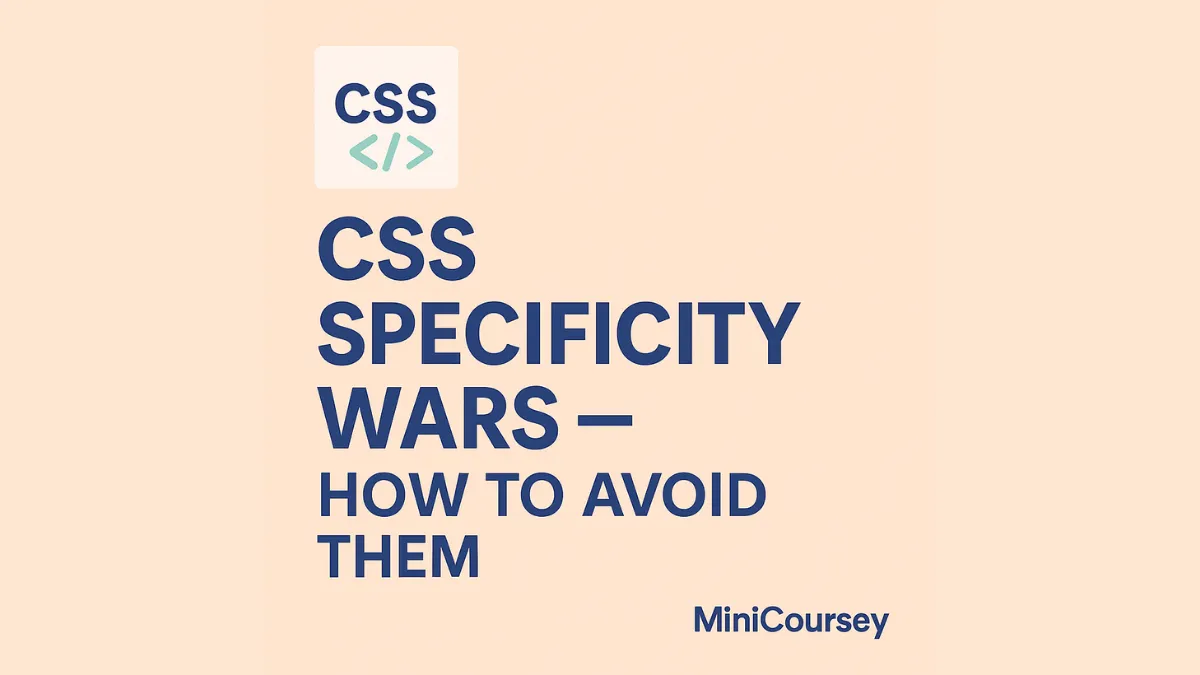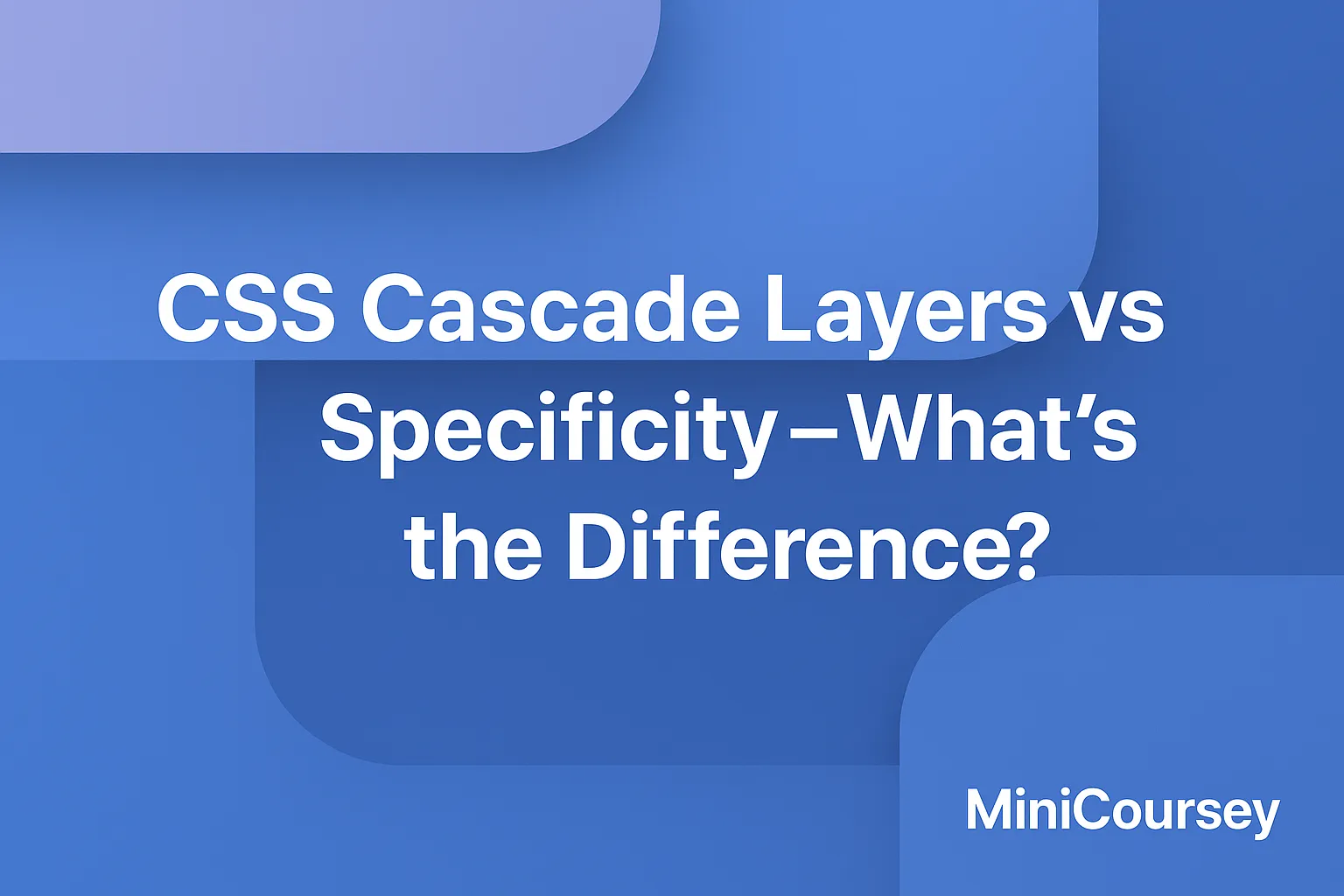CSS Variables — Write DRY, Scalable Styles
Still duplicating the same colors, fonts, or sizes in your CSS? There’s a better way — CSS variables! Also called custom properties, CSS variables help you write DRY (Don’t Repeat Yourself) code that’s easy to scale and maintain. Update a value once, and it changes everywhere it’s used. In this MiniCoursey quick guide, you’ll learn … Read more


